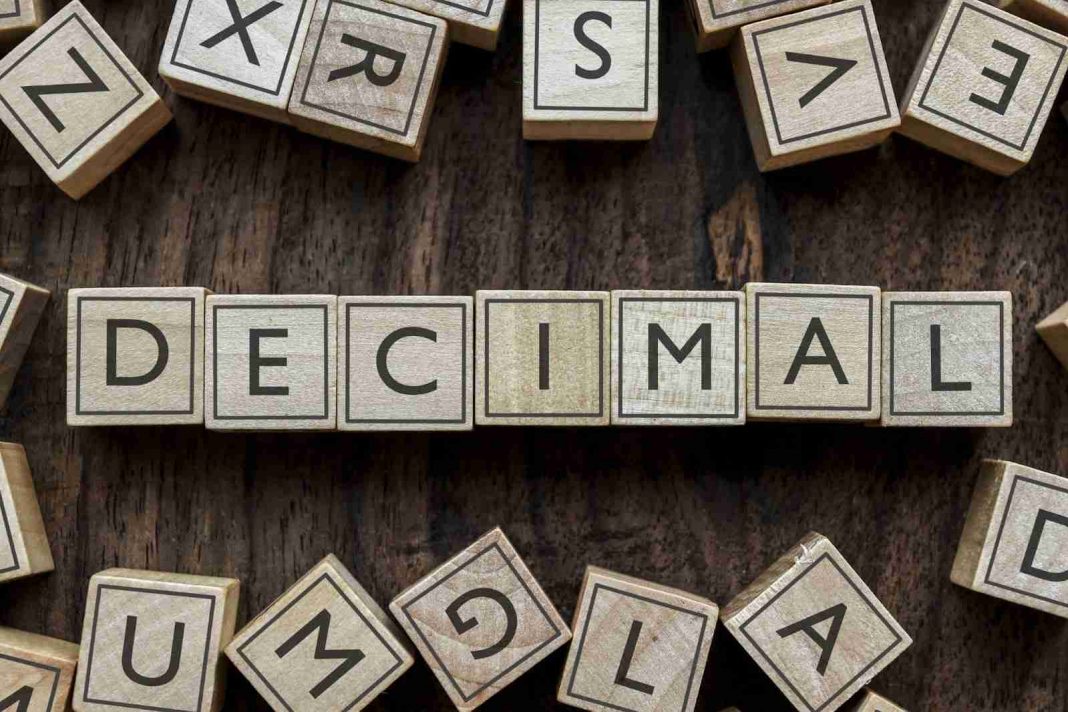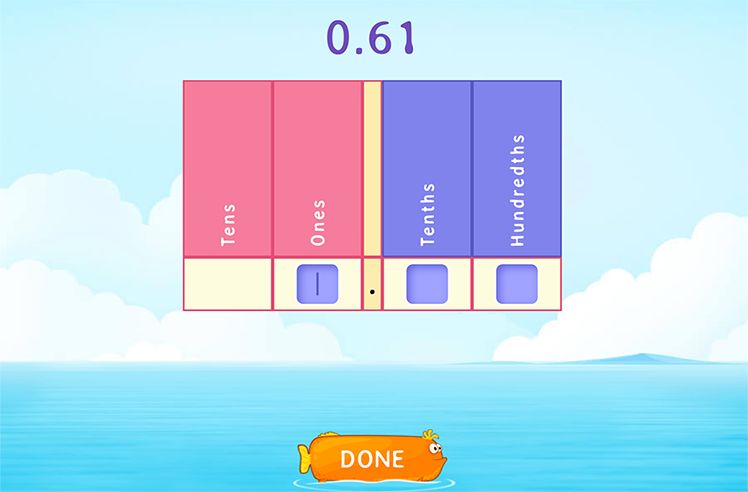Understanding how to teach decimals to kids is crucial because decimals can be quite challenging for them to grasp. Unlike whole numbers, decimals introduce a new element – the decimal point – and numbers that extend beyond it. This can feel like learning an entirely new language in mathematics. Why are decimals so tricky for kids? Mainly, it’s because they’re a significant shift from the whole numbers children are accustomed to. Decimals demand an understanding of the numbers and how their position after the decimal point affects their value.
Math & ELA | PreK To Grade 5
Kids see fun.
You see real learning outcomes.
Watch your kids fall in love with math & reading through our scientifically designed curriculum.
Parents, try for free Teachers, use for free
That’s why a structured approach to teaching decimals is so important. We’ll begin with the basics, such as identifying what decimals are and recognizing them, and gradually progress to more complex concepts, like performing operations with decimals. Let us dive in!
What are Decimal Numbers?
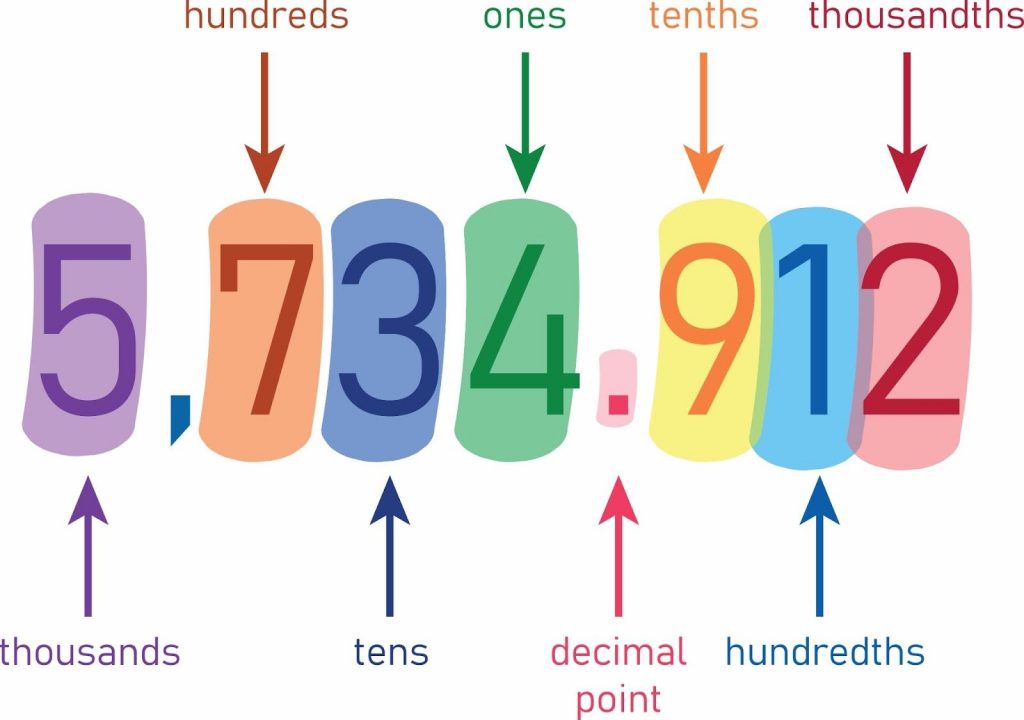
Decimal numbers are numbers with a whole part and a fractional part, separated by a decimal point dot. The number on the left of the decimal point is the whole part, and the number on the right is the fractional part. For example, in 5.7, 5 is the whole part, and 7 is the fractional part, which means a little more than 5 but less than 6. Decimals are a way to write numbers that are not whole, helping us to measure and count things precisely.
10 Progressive Steps to Learn Decimals
Step 1: Identify Tenths
When discussing tenths, we mean the first number right after the decimal point. In the decimal 0.7, the 7 is in the tenth place, representing 7 parts out of 10.
When to Start Teaching: Kids are usually ready to start learning about tenths after they grasp basic counting and whole numbers, typically around 2nd or 3rd grade.
Important Skills and Milestones: The key skill here is recognizing that each digit after the decimal point has a specific place and value. A milestone in learning at this stage is when kids can confidently identify and write numbers in the tenth place.
Begin here to solidify tenths understanding by Identifying tenth games that sharpen number recognition:
Step 2: Identify Hundredths
Hundredths are the next step after tenths. They are the second number after the decimal point. For example, in 0.08, the 8 is in the hundredth place, meaning 8 parts out of 100.
When to Start: Once kids are comfortable with tenths, usually in 3rd or 4th grade, they can learn about hundredths.
Important Skills and Milestones: Understanding the concept of hundredths involves recognizing that each place after the decimal point represents a part of a whole, divided into even smaller pieces. A significant milestone is when children can identify and write decimals with numbers in tenths and hundredths places.
Begin here to master hundredths with interactive game that enhances precision in decimals:
Step 3: Represent Decimals
Representing decimals is about showing them differently, like on number lines or through visual models. This helps kids see how decimals work in real life.
When to Start: This can be introduced alongside or shortly after learning about tenths and hundredths, as it’s a practical application of what they’ve learned.
Important Skills and Milestones: A crucial skill in this stage is placing decimals on a number line and using visual aids to understand their value. A key milestone in how to explain decimals is when a child can represent a decimal like 0.5 or 0.25 using pictures, objects, or a number line.
Begin here to visually grasp decimals with games that boosts understanding through visualization:
Step 4: Read and Write Decimals
Reading and writing decimals involves understanding how to verbally express decimal numbers and how to write them down correctly. For instance, the decimal 3.14 is read as “three point one four.”
When to Start: This skill is typically introduced after children are comfortable identifying tenths and hundredths, usually around 4th grade.
Important Skills and Milestones: The key skill here is for children to recognize each digit’s place and value in a decimal and to express it correctly in spoken and written form. A significant milestone is when a child can confidently read and write decimals in various contexts, such as math problems or real-life situations.
Begin here to practice reading and writing decimals with exercises that improves decimal literacy:
Step 5: Decimal Place Value
Decimal place value refers to the position of each digit in a decimal number and how its position determines its value. For example, in the decimal 0.456, the 4 is in the tenths place, the 5 is in the hundredths place, and the 6 is in the thousandths place.
When to Start: This concept is usually introduced once students have a solid understanding of reading and writing decimals, often in 4th or 5th grade.
Important Skills and Milestones: A crucial skill at this stage is understanding how the value of a digit changes depending on its place in the decimal. A major milestone is when students can break down a decimal into its constituent place values and understand the value of each digit within the decimal.
Begin here to delve into decimal place values with games that strengthen place value comprehension:
Step 6: Compare and Order Decimals
Comparing and ordering decimals involves looking at two or more decimals and determining which are larger or smaller. It also includes arranging decimals in ascending or descending order.
When to Start: This skill is typically taught after students are comfortable with decimal place value, usually around 5th grade.
Important Skills and Milestones: The key skill here is looking at each decimal place to compare and order decimals accurately. A significant milestone in this step is when a child can confidently determine the order of a series of decimals and understand why one decimal is larger or smaller than another.
Begin here to learn how to compare and order decimals with challenges that develop critical thinking:
Related Reading: Comparing and Ordering Numbers: Definition with Examples
Step 7: Round Decimals
Rounding decimals is about making them simpler to work with while keeping their value close to what it was. For example, rounding 3.146 to the nearest tenth would give us 3.1.
When to Start: This concept is usually introduced after students have a good grasp of decimal place value, often around 5th or 6th grade.
Important Skills and Milestones: A key skill in how to teach decimals at this stage is helping children understand how to determine which decimal place to round to and how to do it. A major milestone is when they can confidently round decimals to the nearest tenth, hundredth, or thousandth.
Begin here to get the hang of rounding decimals with games that simplify complex calculations:
Step 8: Convert Between Decimals and Fractions
Converting between decimals and fractions involves changing a decimal into a fraction and vice versa. For instance, the decimal 0.75 can be converted to the fraction ¾.
When to Start: This skill is typically taught after students are comfortable with both decimals and fractions, usually in 5th or 6th grade.
Important Skills and Milestones: The crucial skill here is understanding the relationship between fractions and decimals and how to convert between the two. A significant milestone is when students can smoothly convert decimals to fractions and fractions to decimals without confusion.
Begin here to explore conversion between decimals and fractions with games that foster numerical flexibility:
Related Reading: Decimal Fraction – Definition, Examples, Practice Problems
Step 9: Equivalent Decimals
Equivalent decimals are different decimals that represent the same value. For example, 0.50 and 0.500 are equivalent decimals.
When to Start: This concept is often introduced after students have learned about rounding and converting between decimals and fractions, typically in 6th grade.
Important Skills and Milestones: Teaching decimal place value at this stage involves helping students recognize that adding zeros to the end of a decimal does not change its value. A key milestone is when students can identify decimals that are equivalent to each other.
Begin here to understand equivalent decimals with exercises that encourage analytical skills:
Step 10: Decimal Operations
Decimal operations include adding, subtracting, multiplying, and dividing decimals. This is about using decimals in various math calculations.
When to Start: This is usually taught after students have a solid understanding of all the previous decimal concepts, often in 6th or 7th grade.
Important Skills and Milestones: The key skill here is applying all the previous knowledge about decimals to solve various mathematical problems involving operations. A major milestone is when students can confidently and accurately perform addition, subtraction, multiplication, and division with decimals.
Begin here to tackle decimal operations with games that build operational proficiency in math:
Learning about decimals might seem like a big challenge at first, but with these steps, it becomes much easier. Remember, the key to mastering decimals is to take it one step at a time, ensuring each concept is understood before moving on to the next. With patience and practice, anyone can get good at decimals!
Related Reading: How to Teach Multiplication to Kids: 15 Fun Ways
3 Intriguing Facts About Decimals
- Decimals Have Been Around for Centuries: The concept of decimal numbers has a long history, dating back to ancient civilizations. Today’s system was developed over time, with significant contributions from mathematicians in places like ancient Greece, China, and the Arab world. However, it wasn’t until the 16th and 17th centuries that the decimal system became widely used in Europe, thanks to the work of mathematicians like Simon Stevin.
- Decimals and Computers: In the world of computers, decimals play a unique role. Computers operate using binary code, a system of just two numbers: 0 and 1. When we input decimal numbers into computers, they convert these into binary code. This conversion is crucial for all the digital technology we use today, from smartphones to calculators.
- Decimals in Space: Decimals are not just used on Earth but also crucial in space exploration. Scientists use decimals to calculate distances, speeds, and time in space precisely. These calculations are essential for sending spacecraft to specific locations in space and for the timing of events like rocket launches or satellite orbits.
5 Fun Ways to Teach Decimals to Kids
1. Decimal Bingo
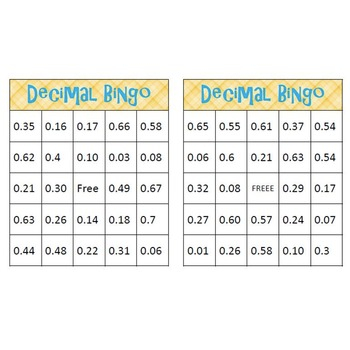
Just like regular bingo, but with decimal numbers. This game helps kids recognize and read decimals.
Materials Needed: Bingo cards with decimal numbers, markers, and a set of decimal number cards for calling out.
How to Do It: Call out decimal numbers, and kids mark them on their cards. The first to get a line or full house wins!
2. Decimal Shopping Spree
A pretend shopping game where prices are in decimals, teaching kids to add and subtract decimals.
Materials Needed: Play money, price tags with decimal amounts, and items to ‘sell.’
How to Do It: Kids ‘buy’ items and calculate total costs and change, using decimal addition and subtraction.
3. Fraction-Decimal Match
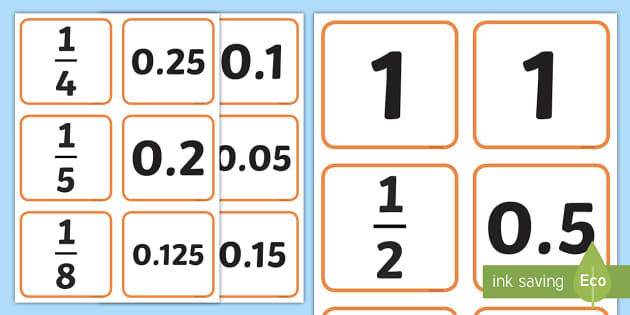
A matching game where kids pair fractions with their equivalent decimals.
Materials Needed: Cards with fractions on one set and decimals on another.
How to Do It: Spread out the cards. Kids match each fraction card with its corresponding decimal card.
4. Decimal Number Line Jump
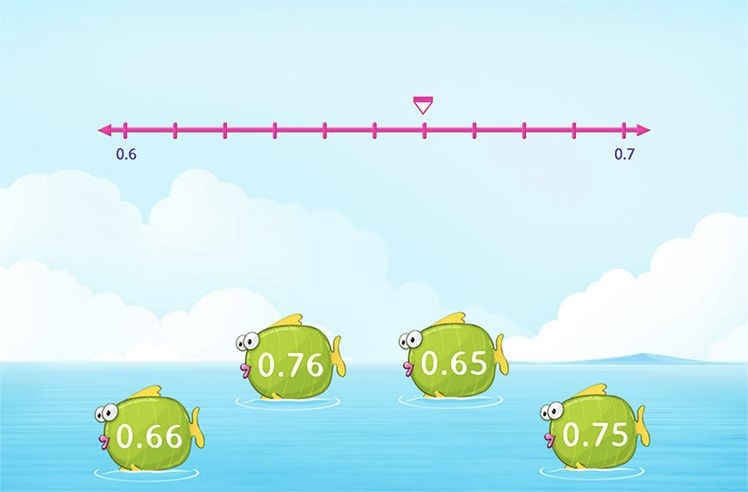
A physical activity where kids jump to positions on a number line marked with decimals.
Materials Needed: A large number line on the ground with decimals marked, and space to jump.
How to Do It: Call out a decimal, and kids jump to the correct position on the number line.
5. Cooking with Decimals
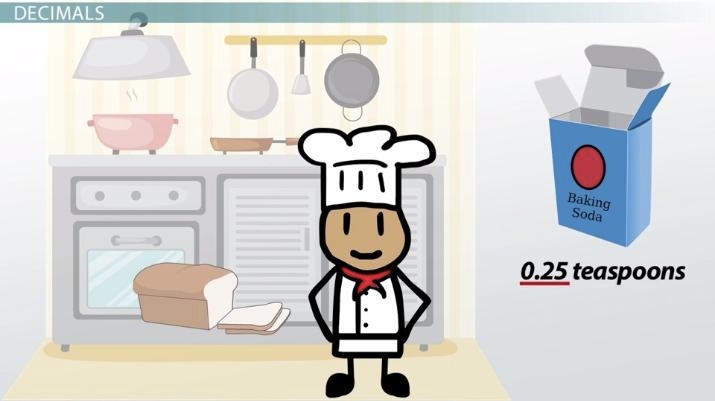
Use cooking to teach decimals, as many recipes require measurements in decimals.
Materials Needed: A simple recipe, ingredients, and measuring tools with decimal measurements.
How to Do It: Kids follow the recipe, using decimal measurements for ingredients, which helps them understand decimals in real-life contexts.
4 Importance of Teaching Decimals to Early Learners
- Builds a Strong Math Foundation: Understanding decimals is a big part of learning math. When we know how to teach decimals effectively to early learners, we help them build a strong foundation in mathematics. This foundation is crucial for tackling more complex math topics as they grow older.
- Prepares for Real-World Situations: Decimals are everywhere in real life – in money, measurements, and even in the supermarket! Teaching kids about decimals early on prepares them to handle these everyday situations with ease and confidence.
- Encourages Precision and Accuracy: Decimals require a level of precision and accuracy. Early exposure to decimals teaches children the importance of being precise and accurate in their calculations, which is a key skill in many areas, including science and technology.
- Enhances Problem-Solving Skills: Learning about decimals improves problem-solving skills. It teaches kids how to think logically and work through problems step by step, which is a valuable skill not just in math, but in life.
Related Reading: Best Math Teaching Apps for Teachers
Conclusion
Decimals might seem tricky at first, but they’re a super important part of math and everyday life. By learning decimals step by step, kids can master these little numbers and use them confidently in school and beyond!
Related Reading: How To Get Better at Math: 10 Effective Ways
Frequently Asked Questions (FAQs)
Are there any tools or apps that can help teach decimals?
Yes, there are many educational apps such as SplashLearn designed specifically for teaching decimals. These often include games and visual aids that make learning both fun and effective.
What's the best approach for teaching decimals to 4th graders?
For 4th graders, start with the basics like identifying tenths and hundredths, and use visual aids like number lines or decimal grids. Incorporate everyday examples, like money, to make it relatable. Keep lessons interactive and engaging to maintain their interest.

















